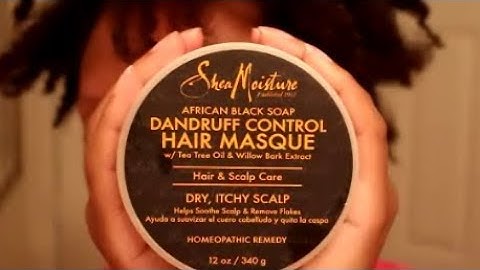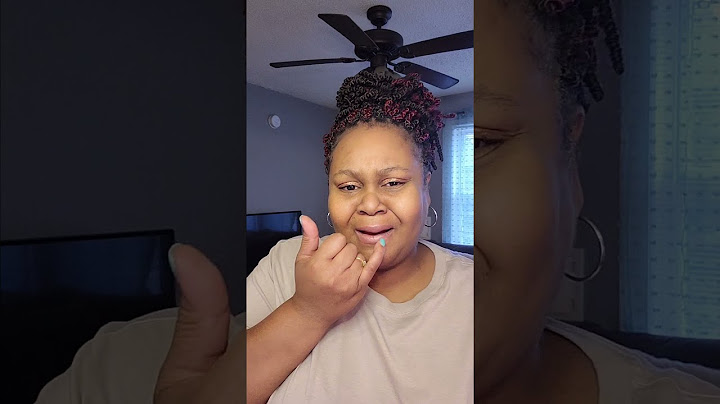The New England Firearms Sidekick Muzzleloading Rifle By Randy Wakeman  The new for 2004 NEF "Sidekick" retains the familiar break-open action design going back to the "Topper" shotguns and opens new distribution opportunities for NEF. NEF / H&R is owned by Marlin Firearms; they are "Made in the USA," in Gardner, Massachusetts. The tested NEF Sidekick is the stainless steel barrel, nickel plated receiver model, with black synthetic stock. It weighs 7 pounds, 6 ounces on a Lyman electric scale. The trigger is surprisingly crisp, and breaks at an excellent three pounds on the nose. Usable barrel length is about 24-3/4" on this "26 inch" barreled gun. The muzzle has an unusual scalloped form of "quick loading assist" false muzzle. It is only an eighth of an inch or so long. The buttstock is hollow, but is better than many "flexomatic" synthetic stocks, and the vented recoil pad makes it comfortable to shoot. The ramrod is a telescoping monstrosity that gains notoriety as the worst ramrod I've ever seen on a muzzleloader. The NEF / Huntsman orange "Zytel" primer carrier is easy to use. With these you can get 35 shots or so out of them. Excess primer gases eject through a cutout on the right side of the barrel, away from a right hand shooter's face. Left hand shooters may not enjoy this as much, but any gas blows to the side, not towards you. The escape route for the gas appears to be no accident, as it keeps blowback away from the inside of the action. The supplied Williams Fire Sights are excellent and mounted the way I like them with the softer green towards the eyes. When mounting a scope, you'll naturally want the Sidekick one-piece base, made of aluminum, and the hammer extension. You'll likely need "high" Weaver-style rings, contingent on brand of ring and specific scope. The Sidekick breechplug is a real monster compared to many breechplugs. The recess towards the breech fills quickly with primer gunk, and needs to be wiped away every 15 shots or so at the range, but this would be a non-issue in a hunting scenario. To remove the breechplug, a small tool is provided that has a massive flat screwdriver on one end, and is operated by sticking a screwdriver through a slot in the other end. The NEF Sidekick proved to be surprisingly accurate. The supplied manual is better than most "economy gun" manuals, even stating the nominal bore of .501 inches and a nominal groove diameter of .510 inches. There has appeared a very crowded market of break action muzzleloaders trying to tag along with the T/C Encore's success. The NEF Sidekick offers a fine trigger and remarkable accuracy in a bargain-priced package that handles very well. It is noticeably lighter and better balanced than most of the barrage of break-open imports. The NEF Sidekick builds on the reputation of the NEF / H&R "Handi-Rifle" line by offering the most accuracy for the dollar you are likely to find in a solidly built front loader. All this, at street prices ranging from an amazingly low $160 dollars or so for the blued / wood model up to the $235 dollar stainless rifle as tested. You'll likely want a replacement ramrod right away from xssights.com or other sources, but other than that the basic gun comes ready to hunt. Note: A complete review of the NEF Sidekick rifle can be found on the Product Review Page. A muzzleloader is any firearm into which the projectile and the propellant charge is loaded from the muzzle of the gun (i.e., from the forward, open end of the gun's barrel). This is distinct from the modern (higher tech and harder to make) designs of breech-loading firearms. The term "muzzleloader" applies to both rifled and smoothbore type muzzleloaders, and may also refer to the marksman who specializes in the shooting of such firearms. The firing methods, paraphernalia and mechanism further divide both categories as do caliber (from cannons to small-caliber palm guns). Modern muzzleloading firearms range from reproductions of sidelock, flintlock and percussion long guns, to in-line rifles that use modern inventions such as a closed breech, sealed primer and fast rifling to allow for considerable accuracy at long ranges. Modern mortars use a shell with the propelling charge and primer attached at the base. Unlike older muzzleloading mortars, which were loaded the same way as muzzleloading cannon, the modern mortar is fired by dropping the shell down the barrel where a pin fires the primer, igniting the main propelling charge. Both the modern mortar and the older mortar were used for high angle fire. However, the fact that the mortar is not loaded in separate steps may make its definition as a muzzleloader a matter of opinion. Muzzleloading can apply to anything from cannons to pistols but in modern parlance the term most commonly applies to black powder small arms. It usually, but not always, involves the use of a loose propellant (i.e., gunpowder) and projectile, as well as a separate method of ignition or priming. Loading[edit]Loaded muzzleloading cannon. (1) Priming charge (2) Main propellant charge (3) Wadding (4) Projectile (5) Wadding In general, the sequence of loading is to put in first gunpowder, by pouring in a measured amount of loose powder, historically mostly by using a powder flask (or powder horn), or by inserting a pre-measured bag or paper packet of gunpowder (called a cartridge) or by inserting solid propellant pellets. The gunpowder used is typically black powder or black powder substitutes like Pyrodex. Sometimes two types of gunpowder (and two flasks) were used consisting of finer priming powder for the flash pan and coarser powder for the main charge behind the ball. This was particularly the case with earlier muzzleloaders like matchlocks but appear to have been less common with flintlocks and was irrelevant with percussion locks since they used percussion caps rather than priming powder. Wadding is made from felt, paper, cloth or card and has several different uses. In shotguns, a card wad or other secure wadding is used between the powder and the shot charge to prevent pellets from dropping into the powder charge and on top of the shot charge to hold it in place in the barrel. In smooth bore muskets and most rifles used prior to cartridges being introduced in the mid-to late nineteenth century, wadding was used primarily to hold the powder in place. On most naval cannons, one piece of wadding was used to hold the powder in place and served the purpose of creating a better seal around the shot. Another was used to act as a plug to stop the shot rolling out because of the swaying of the ship. The use of cartridges with both gunpowder charge and ball, made up in batches by the shooter or a servant, was known from very early on, but until roughly around 1800 loading using a powder flask and a bag of balls was more common outside of the military. The measuring stage for the barrel charge of gunpowder could be avoided by carrying a number of pre-measured charges in small containers of wood, metal or cloth, often carried on a bandolier. These were known by various names, including "chargers" or "apostles" as 12 were often carried. For most of the time muzzleloaders were in use, a round ball and pre-measured powder charge could be carried in a paper or cloth wrapping. The shooter would bite off the end of the paper cartridge with his teeth and pour the powder into the barrel followed by the ball encased in the paper wrapping. The projectiles and wads were then pushed down into the breech with a ramrod until they were firmly seated on the propellant charge. Priming powder could be carried in a separate priming flask and poured into the priming pan or a little powder from the cartridge was used, and the frizzen was pushed down to hold the priming powder in place. After the gunpowder and projectile or shot charge were placed in the barrel a ramrod was used to firmly pack everything down at the base of the barrel. Then either a priming charge was placed in the priming pan or a percussion cap was placed on the nipple, the firing mechanism initiated; the cock or hammer was then cocked to make the firearm ready to fire. Projectile types and history[edit] A pair of French rifled, flintlock, duelling pistols by Nicolas Noël Boutet 1794-1797. Royal Ontario Museum, Toronto, Canada. The set of accessories includes a small hammer as rifled pistols used slightly oversized bullets; a hammer was needed to drive the bullet down the barrel when loading.[1] Muzzleloading firearms generally use round balls, cylindrical conical projectiles, and shot charges. In some types of rifles firing round ball, a lubricated patch (see Kentucky rifle) of fabric is wrapped around a ball which is slightly smaller than the barrel diameter. In other types of round ball firing rifles, a ramrod and hammer is used to force the round ball down through the rifling. When fired, either the lead ball or the wrapping grips the rifling and imparts spin to the ball which usually gives improved accuracy. In rifles firing Minié balls, the patch, often the paper wrapping from the cartridge, is used as an initial seal and to hold powder in place during loading. The Minié ball replaced the round ball in most firearms, especially military, in the 1840s and 1850s[citation needed]. It has a hollow base which expands to grip the rifling. The combination of the spinning Minié ball and the consistent velocity provided by the improved seal gave far better accuracy than the smoothbore muzzleloaders that it replaced. Modern usage[edit]When aiming for great accuracy, muzzle-loaders are usually cleaned ("swabbed") before reloading, so that there is no residue left in the barrel to reduce accuracy, though in competitions run by the international governing body, the MLAIC, this is prohibited for military rifle and musket events. However, in small arms muzzleloading rifles, swabbing is only done after every 5-10 shots. Large caliber muzzle-loaders such as cannons are always swabbed between shots to prevent accidents caused by live sparks igniting the fresh charge of powder as it is being loaded. Muzzleloading[edit] Muzzleloading is the sport or pastime of firing muzzleloading guns. Muzzleloading guns, both antique and reproduction, are used for target shooting, hunting, historical re-enactment and historical research. The sport originated in the United States in the 1930s, just as the last original users and makers of muzzleloading arms were dying out. The sport received a tremendous boost in the 1960s and 1970s. The Muzzle Loaders Associations International Committee (www.MLAIC.org) was formed in 1970 and held its first World Championship in 1971. Since then a flourishing industry manufacturing working reproductions of historic firearms now exists in the United States and Europe, particularly in northern Italy, for example at Gardone Val Trompia, in the Province of Brescia. In the United States muzzleloading guns are, subject to a number of qualifications, generally not considered firearms. Subject to state law they may be possessed by persons who might otherwise not be legally allowed to own a firearm.[2] The American National Muzzle Loading Rifle Association holds two national tournaments a year in Friendship, Indiana as well as the Western National Shoot Event held in Phoenix, Arizona. The Muzzle Loaders Associations International Committee (MLAIC) governs international competition with muzzle-loading arms. The MLAIC holds a Short Range World Championship in even-numbered years and a Long Range World Championship (300 to 1000 yards) on odd numbered years (South Africa has won the last 5 Long Range World Championships). Modern use[edit]Driven by demand for muzzleloaders for special extended primitive hunting seasons, firearms manufacturers have developed in-line muzzleloading rifles with designs similar to modern breech-loading centerfire designs.[3] Knight Rifles pioneered the in-line muzzleloader in the mid-1980s, manufacturing and selling them to this day.[4] Savage Arms has created the 10ML-II, which can be used with smokeless powder, reducing the cleaning required.[5] However, Savage has discontinued the production of smokeless muzzleloaders and no company has yet to pick up production of a new smokeless muzzleloader. There are several custom gun makers that are currently building smokeless muzzleloaders on new or donor bolt actions. See also[edit][edit]
[edit]
References[edit]
External links[edit]
Do they still make New England Firearms?The New England Firearms company (a brand managed by Harrington and Richardson) is all about the single-shot action, whether in the form of a shotgun or rifle. But the difference is that now, the company imports them and does not manufacture them.
Can black powder firearms be shipped to your house?Most black powder firearms can ship directly to the individual, unless your local state laws prohibit it. If you are ordering a cartridge firearms then an FFL (Federal Firearms License) is required in order to make shipment.
Can you hunt deer with a black powder rifle?Each woodsman who enters into the world of muzzleloading must make a choice between traditional or modern style guns. Although black powder handguns and shotguns may be used to hunt deer, rifles are by far the most prevalent choice.
What are the 3 types of muzzleloaders?There are three types of muzzleloader rifles you might find: Flintlock, Percussion: Cap Lock also known as Side Lock and Modern Inline. Continue reading for your complete guide to Muzzleloading.
|

Related Posts
Advertising
LATEST NEWS
Advertising
Populer
Advertising
About

Copyright © 2024 nguoilontuoi Inc.


















